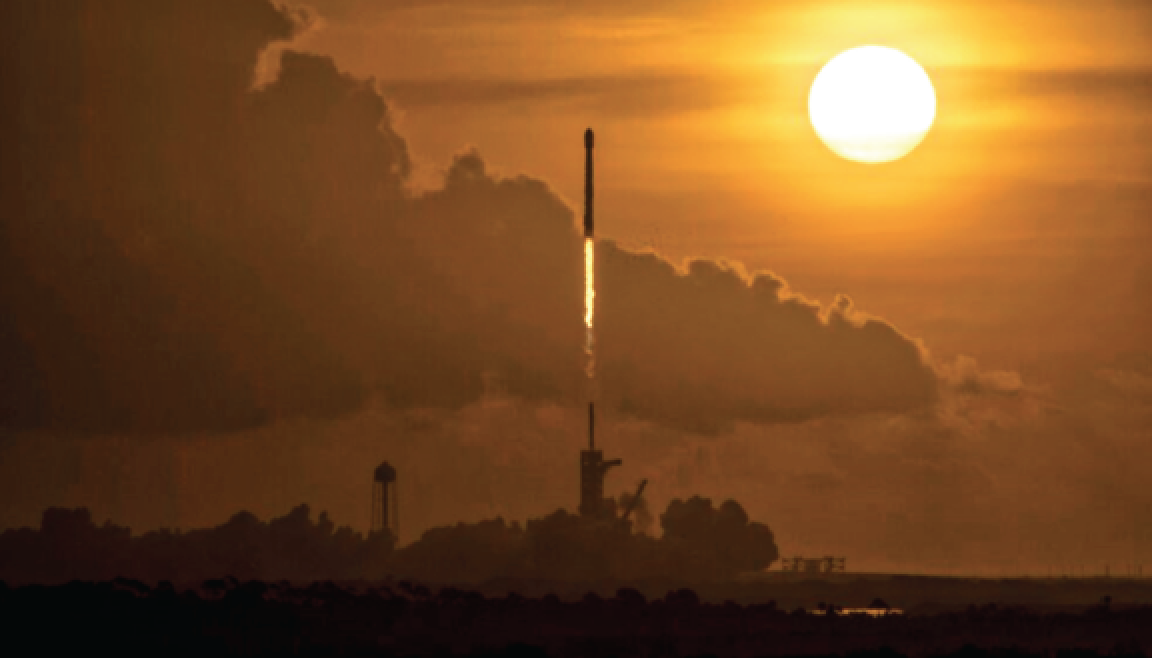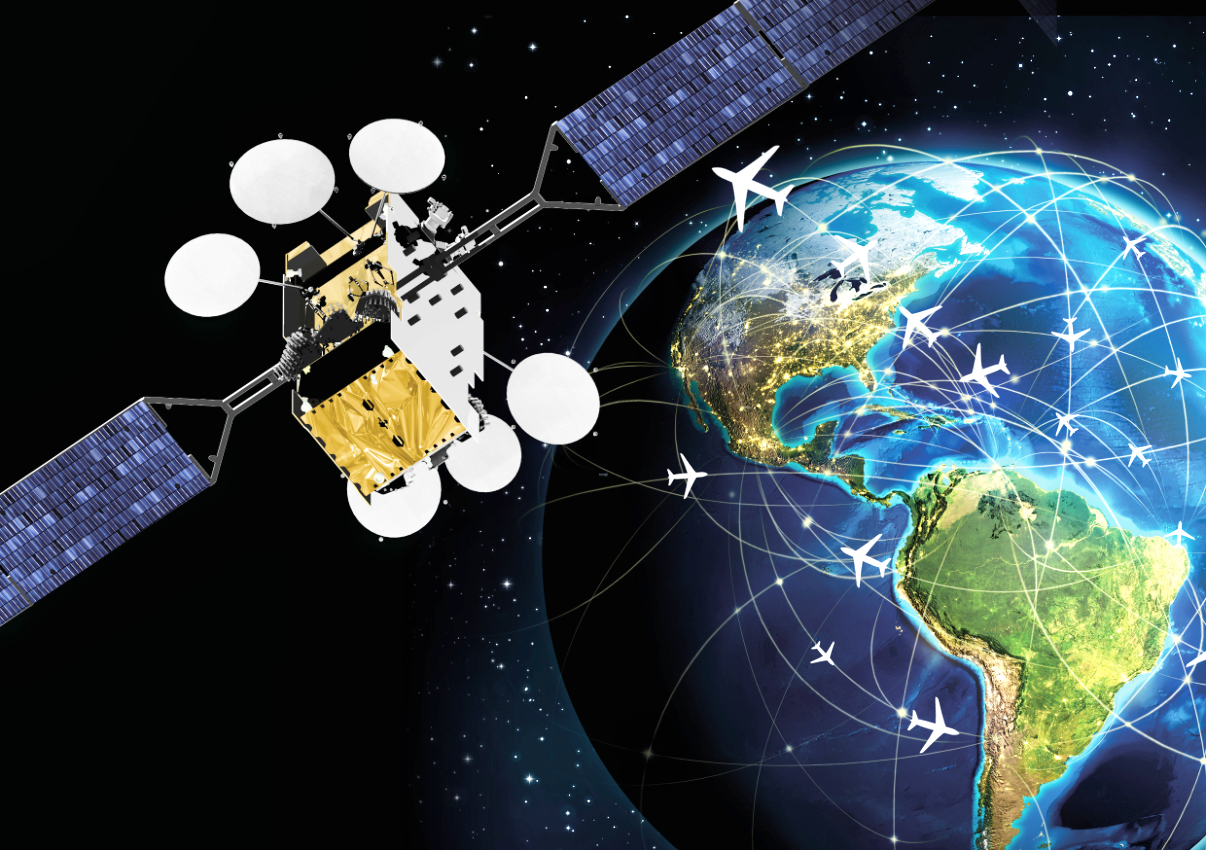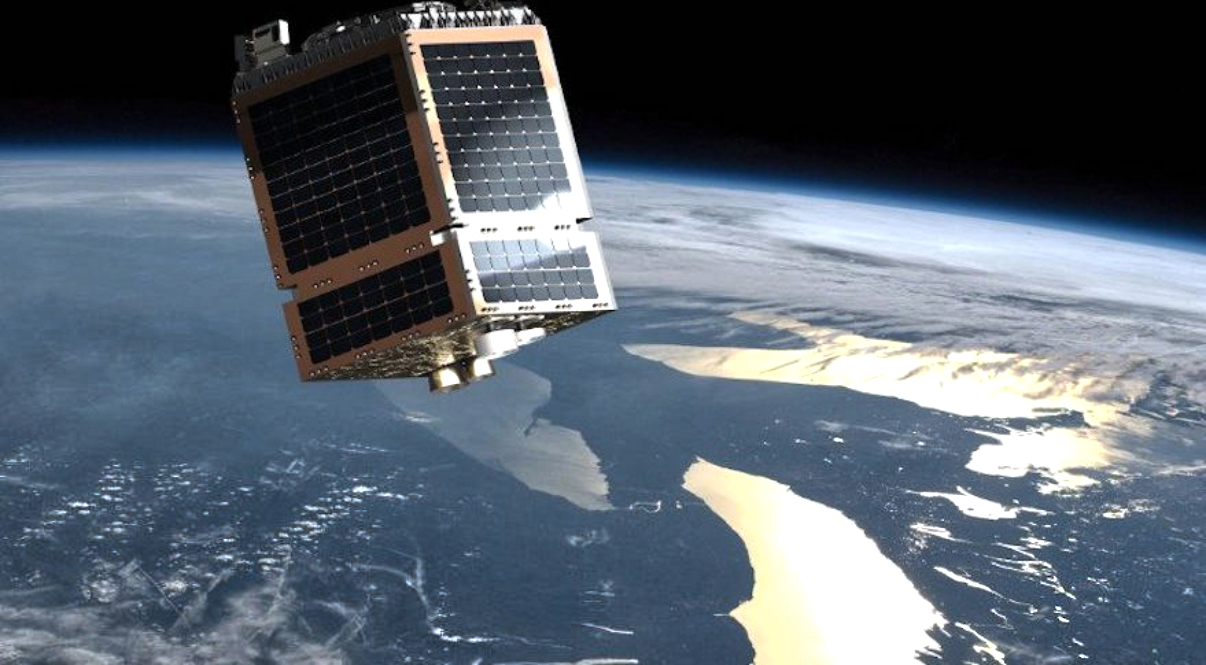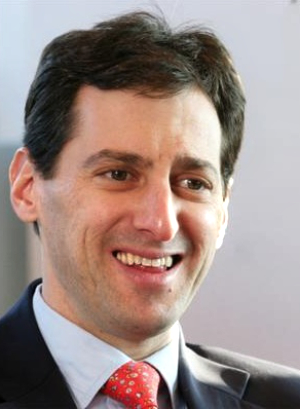2020 was definitely a torrid year for almost all of the satellite industry. There were some bright spots, not the least of which was Elon Musk’s assorted successes in building his Starlink constellation and starting the beta-testing of the system.
However, for the satellite operators, IFE suppliers and Cruise businesses the year was one to forget. The proof, if any was needed, is seen in the results of the key players. The ‘big five’ have had a terrible time.

Spotlight On SES
SES, for example, unveiled their 9 month numbers (to September 30) on November 5 and announced a major strategic change. The company is no longer considering dividing its business into two entities. The abandoned logic was designed to focus the new company on SES’ fast-growing ‘Networks’ division and leave the once vital cash-cow Video segment (still 59 percent of the firm’s revenues) to maintain a plateauing DTH business.

Steve Collar
SES CEO Steve Collar said SES could reach its objectives and respond flexibly under the current company structure and without the expense of funding a split.
However, Collar firmly declined to make any comment on any consolidation move with Paris-based rival Eutelsat although stressing that he firmly believed that consolidation was good for the industry. Collar said that the FCC C-band payments (see below) would allow some “disciplined” options. Group revenues for the 9-months were 1,410 million euros and down 2.9 percent on 2019’s 1,452 million euros.
Collar said that it was the company’s Networks revenues that were the star performer, with revenues up 8.4 percent year-on-year (y-o-y) and the third year of strong growth, securing 2.3 billion euros of backlog. The Video division’s revenue was “stable quarter-on-quarter” according to a company statement, at 832 million euros (down 8.1 percent) and with a core 3.5 billion euros of backlog.
The upcoming SES-17 satellite and launches of the firm’s O3b‘s next generation mPower satellites have already secured $500 million of backlog. Also showing excellent growth was SES ‘Mobility,’ with 17.9 percent growth y-o-y.
Collar said that the company was “on track” to clear US C-band frequencies and to realize the full $4 billion of accelerated relocation payments from the FCC. The auction is due to start this month (December 2020). SES is fully on schedule for first clearing by 5 December 5, 2021, and second clearing by December 5, 2023 and providing “Significant shareholder returns [on the second payment].”
Specifically, and on the question of shareholder returns from the FCC schedule, SES stated, “Second payment of C-band relocation incentive ($2.99bn pre-tax linked to success milestone in Q4 2023) to be used for a mix between return to shareholders, [strengthen] the balance sheet and any disciplined value-accretive investment.”
SES also said they were anticipating a tax rate of 20 to 25 percent on the FCC payments, at the lower end of that range.
The SES numbers received praise from analyst Giles Thorne from investment bank Jefferies, who said SES had delivered a “good set of results. There is plenty here to support the recent break-out in the equity [share price rise], albeit from depressed levels.” Thorne’s prescient comments were endorsed with the ‘Virus Vaccination’ news on November 8 that sent SES shares up 9 percent on the day, all prompted by hopes that air travel and cruising restarts can start once again.
Sami Kassab from Exane/BNPP was also optimistic. “[This improved organic revenue] underpins our view that SES technology is market-leading and enables the group to win new contracts more than offsetting industry-wide pricing pressure. Mobility is ahead of expectations too. SES keeps growing in Mobility while Eutelsat is suffering declining revenues due to Covid 19 and a weaker infrastructure, in our view.
“We note that management has decided that the costs needed to separate Networks and Video were too high and has announced that it would not proceed with the separation of both divisions. We do not believe this closes the optionality on M&A, however.”
As at September 30, 2020, SES carried a total of 8,157 TV channels to viewers around the world, including 2,964 channels in HD and UHD (up 1 percent y-o-y) with 69 percent of total TV channels now broadcast in MPEG-4, with an additional 4 percent in HEVC.
Collar explained the company’s “seamless” operation of a multi-orbit future across GEO and MEO assets stating he believed that SES was well ahead of its competitors in terms of Cloud readiness. As part of its overall cost-reduction program, the company was going to cut back on unnecessary “legal entities” by about one-third [of the total] of unwanted small subsidiary — and frequently only for local compliance — businesses.
“Our solid performance continued into the third quarter, despite ongoing COVID-19 headwinds, with sustained growth across Networks and stable revenue quarter-on-quarter in our Video business. We were delighted to announce a substantial extension of our relationship with Canal+ across three orbital locations and valued at over €230m, as well as a meaningful extension of our strategic partnership with Microsoft as an Azure Orbital connectivity partner and satellite partner for Azure Modular Data Centres. We took measures early in the development of the COVID-19 pandemic to protect the bottom line and the benefits of these cost-saving measures are reflected in our resilient Adjusted EBITDA performance,” a company statement revealed.

Artistic rendition of the SES17 satellite.
Image is courtesy of Thales Group.
Their Canal+ deal over Europe is a useful addition to SES revenues. However, if one satellite operator makes such a gain, then someone else has to lose the contract. That satellite operator is the Intelsat/Telenor position at 1 degree West. The Canal+ owned M7 Group will consolidate its eastern European coverage on SES at 23.5 degrees East by cutting out Intelsat/Telenor at 1 West. SES is, therefore, gaining market share. While the agreement is worth an extra 230 million euros to the backlog at SES, it also secures Canal+ as a key ‘anchor’ tenant on SES beyond 2030.
“In Europe, modest volume reductions on some long-term renewals secured in late 2019 led to lower y-o-y revenue, albeit utilisation rates across SES’ industry-leading European Video neighbourhoods remained strong. North American development was impacted by ongoing ‘right-sizing’ of volume across US cable neighbourhoods and the reduction in the wholesale business, resulting in lower overall year-on-year revenue. In the International markets, the contribution of new revenue secured is yet to fully offset the impact of challenging trading environments, leading to a modest revenue reduction (y-o-y),” said SES.
This year’s overall guidance is maintained with an expected 1.86 to 1.9 billion euros of revenues. More than 97 percent of group revenue outlook is already contracted.
Collar indicated that while the cruise and aviation segments of the firm’s ‘Mobility’ division were extremely stressed at the current time due to COVID, he was expecting a return to a more normal, trading starting next year, with the cruise industry returning to activity.
He also said that SES continues to supply capacity to 4 out of the 6 aviation businesses that specialize in passenger connectivity (the two missing being Viasat and Inmarsat’s owned businesses) and that Gogo’s passenger-based business (in the process of being bought by Intelsat) remained a valued client. In particular, he said, the SES-15 (at 129 degrees West) was operating in a prime location and was extremely popular with the aviation sector.
He didn’t mention — nor was he asked — about the $1.8 billion dispute with Intelsat over how the C-band alliance was handled. SES alleges breaches of fiduciary duty by Intelsat. Intelsat has countered and, in a 101-page filing to its bankruptcy court on October 19, rebutted the SES claim, saying it was an “astounding — and obviously inflated” action based on “meritless theories of breach of contract, breach of fiduciary duty, and unjust enrichment.” The pair have agreed to wait until December 4 for SES to present their counter arguments to Intelsat’s rebuttal.

Artistic rendition of the Eutelsat KONNECT satellite.
Image is courtesy of the Thales Group.
Spotlight On Eutelsat Communications
Eutelsat showed again that the firm’s revenues are under pressure, although the company’s contracted backlog at 4.4 billion — helped by a renewed Sky Italia contract — had gained a reassuring 3 percent y-o-y from 4.1 billion euros. Only one of Eutelsat’s key vertical revenue divisions showed any growth (Fixed Broadband, up 3 percent from 19.9 to 20.5 million euros). All of the other, and more important, departments fell back — the company’s all-important Broadcast revenue fell 2.1 percent (from 194.7 to 190.6 million euros), reflecting the impact from the July 1 renegotiation of contract terms with Greece’s Forthnet.
Eutlesat’s Data and Professional Video fell 8.1 percent; Mobile Connectivity fell 10.2 percent; Government Services fell 2.3 percent. The end result was an overall reduction (y-o-y) of 3.1 percent from 316.5 to 306.7 million euros. Nevertheless, Eutelsat’s revenues came in slightly ahead (1.2 percent) of consensus, which is certainly good news.
However, it is Eutelsat’s Broadcast vertical that worries analysts. Sami Kassab (Exane/BNPP) summed up his view that delays in new DTH projects pointed to a worsening in the three remaining quarters of this trading year (to June 30, 2021) and not helped by the coronavirus, saying, “Management pointed to a likely deterioration in organic revenue growth rates in Video and Government. Video is suffering from a low rate of new business activity, while Government suffered a weak US DoD renewal campaign in the Fallof 2020. The 80 percent renewal rate is below the 85 percent of spring 20 and the 90 percent of fall 2019.”

Sandrine Téran
CFO Sandrine Téran said in the call with analysts that broadcast revenue has been stable over the last 13 quarters, which is quite impressive in the satellite industry. She attributed this stability to Eutelsat’s geographic exposure, its absence from the North American market and the resiliency of DTH broadcasting as well as channel growth in emerging markets.

Rudolphe Belmer
Rudolphe Belmer, the company’s CEO, was also, overall, upbeat, and he said, “Eutelsat has made a solid start to the year, with Operating Verticals revenues in line with expectations and a backlog of 4.4 billion, up 3 percent y-o-y. Highlights of Q1 include the renewal of the Sky Italia contract at Hotbird, confirming the ongoing relevance of satellite in Western Europe, and significant steps in our Fixed Broadband strategy with the acquisition of Bigblu Broadband Europe ahead of the imminent entry into service of Eutelsat Konnect.”
Eutelsat highlighted the key news for the quarter...
• Sky renewal confirming the ongoing relevance of satellite broadcast in Western Europe
• Extension of contract durations with Tricolor TV in Russia and Azam TV in Sub-Saharan
• Africa, new wins with BluTV and Kabelio
• Slowdown in the pace of new business against current operating backdrop.
• On July 31, 2020, Eutelsat reached an agreement with Bigblu Broadband to acquire that firm’s European satellite broadband activities for a consideration of approximately 38 million pounds. The transaction closed on September 30, 2020.
As of September 30, 2020, the total number of channels broadcast by Eutelsat satellites stood at 6,683, down 4 percent y-o-y. The number of HD channels stood at 1,739 versus 1,582 a year earlier, up by 10 percent, representing 26 percent of channels, as compared with 22.7 percent a year earlier. As a result, the Mb/s consumption is stable y-o-y. The number of operational transponders as of September 30, 2020, stood at 1,382, down by five units y-o-y. This reflected, on the one hand, lower operational capacity at 5 degrees West following the transfer of services from the EUTELSAT 5 West A to the EUTELSAT 5 West B satellites in January of 2020 and, on the other hand, incremental capacity brought by EUTELSAT 7C in January of 2020.
The number of used transponders stood at 966, unchanged on a y-o-y basis and up by six units q-o-q. As a result, the fill-rate stood at 69.9 percent when compared with 69.7 percent, both a year ago and at the end of June 2020.
The analysts delivered comments that could be summed up as “mixed,” as Exane’s Kassab summarized, saying that Eutelsat’s management expected to return to top-line growth in 2023. “Management is going to increase its investments in the retail distribution of its European broadband business. Its retail prices are to run between €30-€70 for up to 100Mb/s and unlimited usage (as long as the satellite capacity permits). Net adds had their second consecutive quarter of y-o-y growth in Q1/2021.”
Kassab pointed out that the successful renewal of Sky Italia lead him to assume that Nilesat gets renewed on more favourable terms in FY23. “FY23 also benefits from strong growth in Fixed Broadband, driven by the push in retail distribution in Europe and the entry into service of Eutelsat Konnect VHTS, scheduled for FY23 H1.”
Giles Thorne from Jefferies said the Eutelsat results were, “A dollop of ambition with a pinch of trepidation”. Thorne described the results as “uneventful” although with a “nervous tilt to the near-term growth outlook”. The "can Eutelsat grow again" debate will remain for now, he added. Thorne listed the fall-off in the number of channels carried:
Down 105 in Q1
Down 79 4Q/20
Down116 1Q/20
Thorne also spoke about the upside growth in HD penetration (now 26 percent from 24.7 percent / 22.7 percent in 4Q20 / 1Q20) and highlighted the overall "stable" y-o-y Mb/s consumption. He also spoke optimistically about the likely revenue benefits from ‘Konnect’ which were possibly “high.” He said, “Absolute guidance remains tight-lipped, but we'd highlight: Konnect has the subscriber capacity of roughly one third to one half of that of Konnect VHTS, and the latter has capacity for several hundred thousands subscribers; the target retail ARPU is €30-70 per month (including VAT), which also covers the rental cost of the CPE.”
Spotlight On Intelsat
Intelsat did not hold an analysts call for the firm’s Q3 numbers; however, Intelsat’s key metrics showed declines in the firm’s key division. Q3 revenue was $489.4 million; Network services (35 percent of overall revenue) fell 6 percent y-o-y to $169.6 million, while Media (42 percent of overall revenue) was $203.5 million and represented a fall of 9 percent y-o-y. The shining light was Intelsat’s reliable Government Services unit (22 percent of total), which grew 13 percent to $108 million.

Steve Spengler,
Intelsat’s President
Intelsat’s fill rate was 74.5 percent on 1,675 transponders, although capacity fill-rates on its multi-beam ‘Epic’ fleet was flat. The company’s backlog declined by $200 million to $6.2 billion.
Despite the bankruptcy limitations, Intelsat’s timely $400 million purchase of in-flight business Gogo’s commercial aviation company might turn out to be a bargain — that is, provided air-travel returns to something like normality in 2022 (as is largely expected).
Intelsat also has the FCC’s C-band auction payments to look forward to, although most observers would like the dispute with SES to be finally resolved.
The good news — such as it is — is that Intelsat hopes to resolve a major chunk of the firm’s debts. The company entered Chapter 11 bankruptcy reconstruction with $15.2 billion of outstanding obligations and is looking to mitigate a major portion of that debt, amounting to some $10.2 billion, and is working with various appointees of the unsecured creditors to uncover viable solutions. Intelsat has already spent $36.4 million on bankruptcy professional costs.
Spotlight On Telesat
Telesat announced the firm’s Q3 and 9 months revenues for the period to September 30, and the news was not good. Revenue for Q3 fell back 15 percent to C$202 million. The 9 month numbers were slightly better overall with revenues of C$619 million, a fall of 10 percent for the same period in 2019. Telesat’s backlog is about C$2.8 billion and fleet utilisation at 81 percent.

Artistic rendition of a Telesat LEO satellite.
Image is courtesy of SSTL.
Telesat explained the revenues falls, saying, “The revenue decrease was due to short-term services provided to another satellite operator in the third quarter of 2019 that did not recur in 2020, a reduction of service for one of Telesat’s North American DTH customers and lower revenue due to the completion of the term for prepaid services. In addition, the restructuring of certain customer contracts related to the COVID 19 pandemic negatively impacted revenue.”
For the overall 9 month trading period, Telesat added, “For the nine month period ended September 30, 2020, we reported consolidated revenue of C$619 million, a decrease of 10 percent (C$72 million) compared to the same period in 2019. Revenue decreases were due to a reduction of service for one of Telesat’s North American DTH customers and lower revenue due to the completion of the term for prepaid services in a customer agreement that was accounted for as having a significant financing component. In addition, revenue associated with short-term services provided to other satellite operators in 2019 did not recur in 2020.”
For the nine months ended September 30, 2020, Telesat’s net loss was $9 million, compared to net income of $185 million for 2019. The negative variation for the period was principally the result of non-cash foreign exchange losses in 2020, arising from the translation of Telesat’s US dollar denominated debt into Canadian dollars compared to foreign exchange gains in 2019.

Dan Goldberg
Commenting on the results, Dan Goldberg, Telesat’s President and CEO, said, “The overwhelming majority of our revenues has been unaffected by the pandemic and we continue to have robust operating margins and cash flow, which are underpinned by our significant contractual backlog. In addition, we are making substantial progress on the development of our revolutionary LEO satellite constellation as well as our other strategic objectives, including leveraging our valuable spectrum rights.”
The good news for Telesat is the C$600 million commitment from the Canadian government on its ‘digital divide’ plan to reach rural and isolated communities. The scheme sees the cash going into satellite operator Telesat, which says it will ensure affordable, high-speed broadband connectivity across all of Canada with Telesat’s forthcoming Low Earth Orbit (LEO) satellite constellation.
There was a Memorandum of Understanding (MoU) signed in July of 2019 that outlined the basics of the scheme, which has now been ratified. The agreement enables Internet and mobility service providers to acquire Telesat LEO capacity at substantially reduced rates to bring universal broadband connectivity to rural, Northern and Indigenous communities across Canada.
Under the agreement, Telesat will be eligible to receive amounts over a ten year period, once the Telesat LEO constellation enters service.
Now, all Telesat has to do is to pick a prime contractor to construct the firm’s planned 298 satellites and to then launch them. Telesat is obliged to have 78 craft on-orbit during 2022 and for service to commence by 2023.
Spotlight On Viasat
Viasat is the shing light among the ‘Big 5’ with decent performances. Revenues for Q2/2021 fell back 6 percent, largely due to the absence of US airline traffic. Government business was solid and US fixed broadband added 5,000 subscribers, with an ARPU of just over $100 per month. The company said,“Sustained US fixed subscriber broadband demand in Q2/FY2021 reflected the work-from-home and school-from-home environment. We anticipate some of the factors affecting demand, especially substantial growth in video streaming, will likely persist post-pandemic.”
ViaSat announced that Mark Dankberg, the firm’s CEO, is moving up the boardroom table to the position of Executive Chairman and will be replaced by long-term company executive, Rick Baldridge.
ViaSat delivered a reasonably optimistic set of forecasts for calendar 2021 and helped by a booked backlog of $2.3 billion. Importantly, the company’s planned fleet expansion is underway with a new series of Viasat 3 satellites. The first of this new fleet has full payload delivery anticipated in Q1 calendar year 2021 and satellite launch is targeted to launch at the end of the calendar year.
Hope
In summary, we hope that 2021 brings a recovery across key divisions. We hope that 4K/UHD widens its adoption rate and leads to new channels. We hope that sport recovers and is again a major consumer of Occasional Use (OU) traffic.
We anticipate the 2021 Tokyo Olympics with enthusiasm. We hope that Network/Data traffic generally continues to grow and that in-flight consumption recovers. We hope the cruise industry sets sail again and that the awful Corona Virus is put firmly in its box.
We hope that —for the Big 5 — that DTH/DBS does not die due to the growth of Netflix, Hulu, Peacock, Amazon Prime and the various other OTT suppliers.
We hope that 2020 can be quickly forgotten and that 2021 shows growth, safe employment and dependable forecasts for 2022!

Senior Columnist Chris Forrester is a well-known broadcasting journalist and industry consultant. He reports on all aspects of broadcasting with special emphasis on content, the business of television and emerging applications. He founded Rapid TV News and has edited Interspace and its successor Inside Satellite TV since 1996. He also files for Advanced-Television.com.



